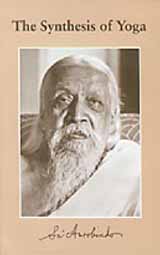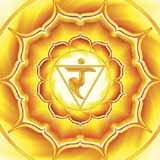Integral Health
The metaphysical basis of Integral Health — the ‘Threefold Life’
In his treatise on the practical application of yoga (The Synthesis of Yoga), Sri Aurobindo describes three kinds of life available to humanity in consonance with three separate formulations in Nature: “the ordinary material existence, a life of mental activity and progress; and the unchanging spiritual beatitude (1).” These three kinds of life are the three choices available to the human being; they have their separate connotations, trajectories and culminations. They have unique ramifications in every sphere of human activity, including health, development and psychology.
Material existence
The characteristic law of material life is “not so much in progress as in persistence, not so much in individual self-enlargement as in self-repetition (2).” That does not mean there is no movement of progression in material existence, for the trajectory of biological evolution manifests in the material matrix, progressing hierarchically through increasingly complex forms. This evolutionary progression does not necessarily mean the dissolution of the species-types that have been transcended, for “once a type is marked off physically, the chief immediate preoccupation of the terrestrial Mother seems to be to keep it in being by a constant reproduction (3).” Sri Aurobindo further explains that “since individual form is impermanent and only the idea of a form is permanent in the consciousness that creates the universe, — for there it does not perish, — such constant reproduction is the only possible material immortality. Self-preservation, self-repetition, self-multiplication are necessarily, then, the predominant instincts of all material existence (4).”
It is due to this innate instinct for material persistence that even amidst the flow and flux of infinite variations, a movement of consistency and continuity could manifest to support a particular cycle of creation. This resulted in the laws of physical and biological sciences to sustain the world of forms. However, persistence can lead to stagnation and hence Nature arranges three allowances: (a) mutation of existing forms; (b) manifestation of non-material forms within the matrix of material forms creating non-material dimensions of existence. That is how besides the ordinary material existence, we have options for an active mental life and a deeper spiritual existence; (c) the appearance of newer species in evolution. We ordinarily think that evolution culminates with the appearance of the human being but Sri Aurobindo postulates that along with the biological evolution traced by science, there is also an evolution in consciousness which can result in higher models of the human being who transcend the ordinary mental consciousness. The innate characteristics of material life have their own ripples in the spheres of health and development. Due to the property of self-repetition, habits become ingrained in the biological schemata. Some habits are productive, useful and constructive. Some habits are maladaptive leading to undesirable traits or illness behaviour. The instinct for self preservation propels the human pursuit for maintaining health and poise. It is this factor that has reduced mortality and morbidity and increased longevity. However the instinct of self preservation in the human life has to proceed in consonance with the global perspective or else it will be achieved or maintained selfishly at the cost of natural, environmental and ecological factors leading to a saga of self-destruction. The instinct of self multiplication perpetuates the race but if uncontrolled and unregulated can also lead to the proliferation of self-destructive Frankensteins, fulfilling the prophesy:
“Thus wagged on the surreal world, until A scientist played with atoms and blew out The universe before God had time to shout (5).”
Despite all shortcomings of material life there is a silver lining. The imperfection and limitation of material life allows a creative space for evolutionary growth. Instead of considering material life as illusory, Sri Aurobindo considers it to be transitional. This is a ray of hope, a promise for the future.
Mental life
When mind blossoms in the bosom of material existence, Life makes a turn-around, frees itself from fixed moorings and gets ready to enlarge and expand in scope and magnitude. The password of mental Life is progress and it follows the route of change, variability and expansion:
“The characteristic energy of pure Mind is change and …this law of Mind assumes the aspect of a continual enlargement, improvement and better arrangement of its gains and so of a continual passage from a smaller and simpler to a larger and more complex perfection…. Change, then, self-enlargement and self-improvement are its proper instincts. Its faith is perfectibility, its watchword is progress (6).”
The progressive change initiated by the Mind enlarges and elevates Life to new heights. It is this urge for progress that has led the quest for newer and newer discoveries that have made human civilisation rich and variegated. Refusing to bow down to the boundaries of space and time, man has not only crafted spaceships and satellites, but has also designed organ transplantation and test-tube babies. The human being has been able to transcend the limitations of material constraints to emerge into the splendour of the trajectory of progressive perfection.
The urge for progress comes at a cost. Unregulated attempts to progress can also result in disasters. In terms of health, an unregulated proliferation of cells can give rise to cancer. At the level of vital action, an unregulated pressure for high achievement can lead to executive stress, Type-A personality and proneness to ischemic heart disease. At the level of emotions, an unregulated change can result in a host of hazards ranging from a disruption of relationships to a paradoxical nihilism. At the level of ideation, an unregulated intellectuality can lead to a perverted mindset or undue glorification of a partial truth. At the level of the desire-self, an unregulated expansion can lead to a magnified, dictatorial or fascist egoism not only of an individual but of a coterie that can play havoc with civilisation. The line of progression can shift to the direction of regression.
Spiritual life
Besides the ordinary material existence and the life of mental activity and progress, there is a spiritual life moving towards “self-existent perfection and immutable infinity (7).” Life aims at immortality, mind aims at perfection. The spiritual life aims at the consummation of both these movements. Obviously both material immortality and perfection of ideals are difficult to achieve. Hence the spiritual aspirant has to attain a state of consciousness that is untouched by the imperfection of the idea and the limitation of the form. Such a spiritual life brings peace and bliss, rapturous ecstasy and a sense of fulfilment. In that poise, both material life and mental activity become meaningless, illusory and transient. Salvation is achieved by rejecting both matter and mind and taking refuge in a transcendental poise that either supports a featureless blankness or a motiveless bliss.
Spiritual fulfilment comes at the price of rejection of material life and mental progress. This leaves the world to quail in its anguish. The individual and the collective humanity cannot be reconciled in harmony as individual realisation outweighs the collective aim. True, compromises are made. The spiritual aspirant develops compassion for fellow-beings; missionaries and intellectuals resort to altruism out of moralistic sentiments that simultaneously placate their ego. The crux and genesis of suffering remain unaltered with such palliatives.
The problem
Sri Aurobindo brings the possibility of an ‘integral human existence’ that is different from material, mental and spiritual life. He explains elsewhere:
“I am concerned with the earth, not with worlds beyond for their own sake; it is a terrestrial realisation that I seek and not a flight to distant summits. All other yogas regard this life as an illusion or a passing phase; the supramental yoga alone regards it as a thing created by the Divine for a progressive manifestation and takes the fulfilment of the life and the body for its object (8).”
Inevitably such an integral human existence must harmonise the material life, mental life and spiritual life. Nature has experimented with several variants and combinations. In Europe, the material life was imprinted with the habit of conscious change to produce progressive societies. In the East, the material life was habituated to accommodate a religious temperament creating spiritualised communities. In both cases, success was partial. In the West, physical Nature had its revenge with “great wearinesses, swift exhaustions, startling recoils (9).” An emphasis on external values devalued the essence of life and the malady now manifests in different forms, ranging from existential neurosis, increasing rate of suicides, efflorescence of new diseases like AIDS to ethnic conflicts in Eastern Europe. In the East, the glorification of Spirit impoverished material life leaving huge masses of the population reeling under poverty, illiteracy, and ill-health.
Reconciliation
How do we arrive at a harmony?
Sri Aurobindo explains:
“The truth is that neither the mental effort nor the spiritual impulse can suffice, divorced from each other, to overcome the immense resistance of material Nature. She demands their alliance in a complete effort before she will suffer a complete change in humanity. But, usually, these two great agents are unwilling to make to each other the necessary concessions (10).”
Sri Aurobindo’s statement points to a great truth of creation. As Matter is the initial base on which the whole edifice of evolution manifests, it is not surprising that material life offers the greatest resistance to the non-material dimension of creation, viz. the life of mental activity and the spiritual life. This is why despite the intervention of the rationalists and prophets, despite the advancements in science and technology, despite mankind having the fortune of improved healthcare and increased longevity, material life remains satiated but not satisfied and hedonism brings pleasure but not fulfilment, while spirituality has liberated exceptional individuals but left the masses languishing in suffering, ignorance and falsehood.
An attempt to harmonise the different kinds of life at the present level where human consciousness operates can only lead to makeshift compromises. True integration can progressively manifest if an evolutionary growth in consciousness can lead to future models of the human being who transcend human mentality as it is today. This evolutionary spiral is a movement that has been initiated in the Integral Yoga of Sri Aurobindo. It requires a complementary movement in the sphere of health and development that progressively integrates the gains of the past with the potentials of the future. Such a model of health and development has to follow a multi-dimensional curve of integration. An integration of the planes of consciousness transmutes the points of disharmony into points of harmony, promoting body-mind equilibrium, an essential requisite for individual health. The integration of the ethical and aesthetic dimensions promotes social health and strengthens cultural bonds. The integration of the individual with collective life promotes the foundation for futuristic societies. The integration of material existence, mental activity and spiritual experiential living leads to the possibility of a divine life. The integral trajectory supporting an evolutionary spiral in consciousness paves the way for an ‘integral human existence’ and as its corollary, a model of integral health and development.
References
1. Sri Aurobindo. The Synthesis of Yoga, SABCL, Volume 20. Pondicherry; Sri Aurobindo Ashram Trust, 1970, p. 15.
2. Ibid,p. 16.
3. Ibid.
4. Ibid.
5. Sri Aurobindo, Collected Poems, SABCL, Volume 5. Pondicherry; Sri Aurobindo Ashram Trust, 1971, p. 145.
6. Op.cit. The Synthesis of Yoga, SABCL, Volume 20. Pondicherry; Sri Aurobindo Ashram Trust, 1970. p.16.
7. Ibid.
8. Sri Aurobindo. Letters on Yoga, SABCL, Volume 22. Pondicherry; Sri Aurobindo Ashram Trust, 1970, p.91.
9. Op.cit. The Synthesis of Yoga, SABCL, Volume 22. Pondicherry; Sri Aurobindo Ashram Trust, 1970, p.18.
10. Ibid., p.19.
Share with us (Comments, contributions, opinions)
When reproducing this feature, please credit NAMAH, and give the byline. Please send us cuttings.





